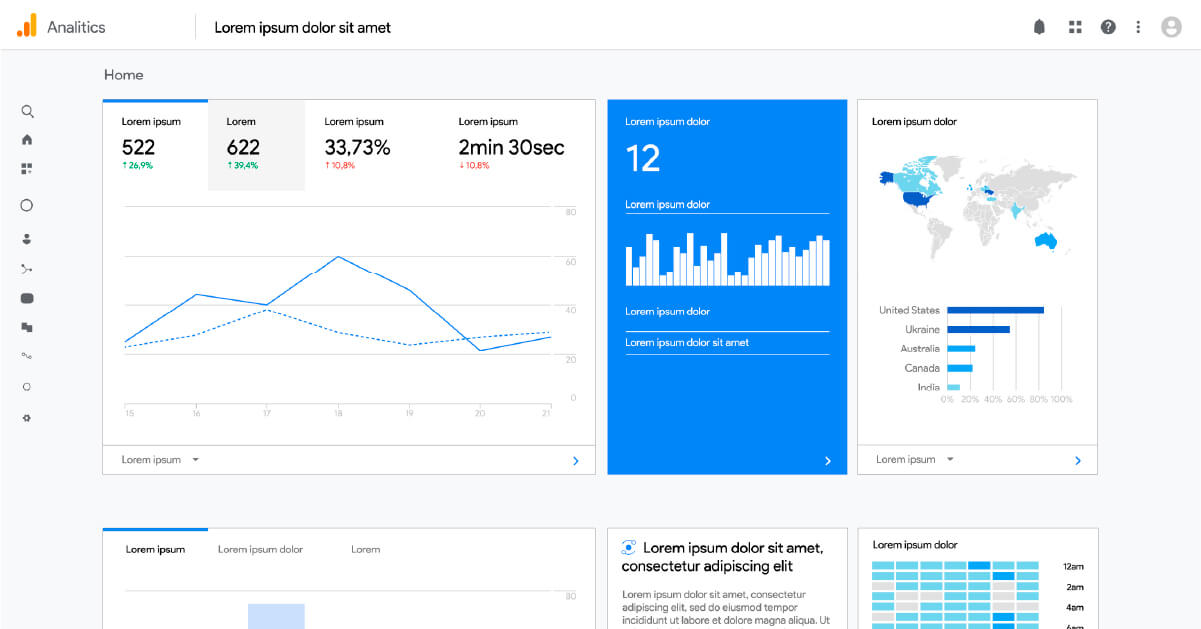B2B customer data and insights
It’s not unusual for B2B companies to wait years after launching before they start digging into their data to figure out who their customers are. Most companies just rely on assumptions or gut instinct. However, assumptions are no match for high quality data that can offer objective insights about how your customers explore and interact with your site.
Until you start looking at the b2b customer data of your website visitors and your existing customers it’s difficult, if not impossible, to make accurate business decisions.

Luckily, with just a few clicks you can get crucial data to start making informed, data-driven decisions. In this article we’re going to look at how to learn about your customers when you have—and don’t have—the data.
Learning about your customers when you have the data
Say goodbye to guesswork
Google Analytics gives you really powerful insights into your customers. It’s free and easy to set up—just insert the tracking code into your Shuup backend in the custom snippets section.

You can report on:
- Age and gender
- Interests
- Location and language
- New vs returning visitors, engagement
- The paid and organic channels customers came through
- Pages visited, bounce rate, time on site, page performance
Just think of all the insights you can gather from these categories. Rather than trying out multiple campaigns, product pivoting, and website redesigns hoping it’ll attract or convert customers, you can now make those adjustments based on information that’s there waiting for you.
Go into each category and start asking questions. The answers will help you make strategic, data-driven changes to your Shuup Store.
Customer Conversations
Google Analytics data is really powerful but another great method for learning about your customers is askingspeaking to the people on your team who speak to them the most. One effective, often overlooked way, is to speak to your sales team. If you don’t have a team, go back through support tickets, contact forms, and reviews.
What customer pain points come up regularly? How does the customer see your product as the solution? What kind of language do they use to describe your product? What are the most common use cases?

Knowing how your customer sees your product rather than how you might like to see it provides you with actionable data. Customer insights might help you decide on when to shift focus/development away from one product feature to another, how to rework messaging and copy to reflect the customer’s own language, and adjusting your USPs.
Avoid guessing and making assumptions about what your customers think and like. Instead, check and rely on the relevant data and make educated, informed business decisions.
Here’s a simple example:
You have a Shuup Store. You’re a B2B company based in and focused on the US market, but you also ship internationally. A significant proportion of your traffic comes from the UK. Why is that? Perhaps there’s a high demand for your product, but little supply in that country.
One way to better understand the driver of this dynamic is to dig into Google Analytics.
One key category to investigate is the last page users visit before they leave your website. This is called the “exit page.” E-commerce pages with high exit rates are usually pricing and checkout pages. However, in our example, the page with the most exits is the shipping information page. Why are users who haven’t converted leaving your site after visiting this page?
The answer is you aren’t providing information about UK shipping. This results in users leaving your website without making a purchase. With the help of customer data provided by Google Analytics you were able to learn about the geographic locations of your users and then, based on this insight, make informed changes to your website.
Here’s a simple solution:
- Add detailed shipping information
- Add GBP to your pricing or product pages
- Best solution: add the ability to let visitors choose the region and then redirect to page variants tailored to that audience
Now keep an eye on the exit page rate and monitor the number of sales from UK customers. Our guess is that the bounce rate will decrease Our guess is that the exit rate on the shipping information page will decrease and the sales will increase.
Learning about your customers when you don’t have the data
If you haven’t got the traffic volumes to get statistically significant insights about your customers there are other ways to find out about them.
The most obvious is to create surveys. You can do this through a paid service like SurveyMonkey or for free through Google Forms. Base your questions on:
- Your immediate business goals
- Checking product-market fit
- Customer pain points
- Pricing

For the amatuer slueths among you, you can use a free tool like UberSuggest to find out your competitor’s top performing content and keywords in just a few clicks. How does this help? If you know the kind of content that your competitors’ customers are consuming most or sharing on social channels, you can gather information about their pain points and the type of content they like to consume e.g. blogs, whitepapers, webinars.

Visit the pages in question. See how they are being formatted, the language they use, what features they highlight, and whether they are offering gated content. Read blog, forum, and social comments and reviews—then extract any demographic/customer data.
If your competitors are established and successful, there’s a good chance they’ve already done a ton of customer data analysis and market research. See what’s working for them, tailor it to your own product, and replicate it. Don’t reinvent the wheel.
Final thoughts
Learning about your customers is essential if you’re going to sell products and services that meet market demands. It can be done simply and cheaply by looking at the available data or by speaking directly to your customers or your sales and support teams. Buck the trend of waiting around and wasting time and money—get to know your customers, listen to what they’re asking for, and deliver it.
Key takeaways:
-
Use google analytics for powerful insights
-
Talk to your sales team to learn what customers are really looking for
-
Use surveys to improve product-market fit and customer pain points
-
Use keyword research tools to improve content and understand competitor marketing





